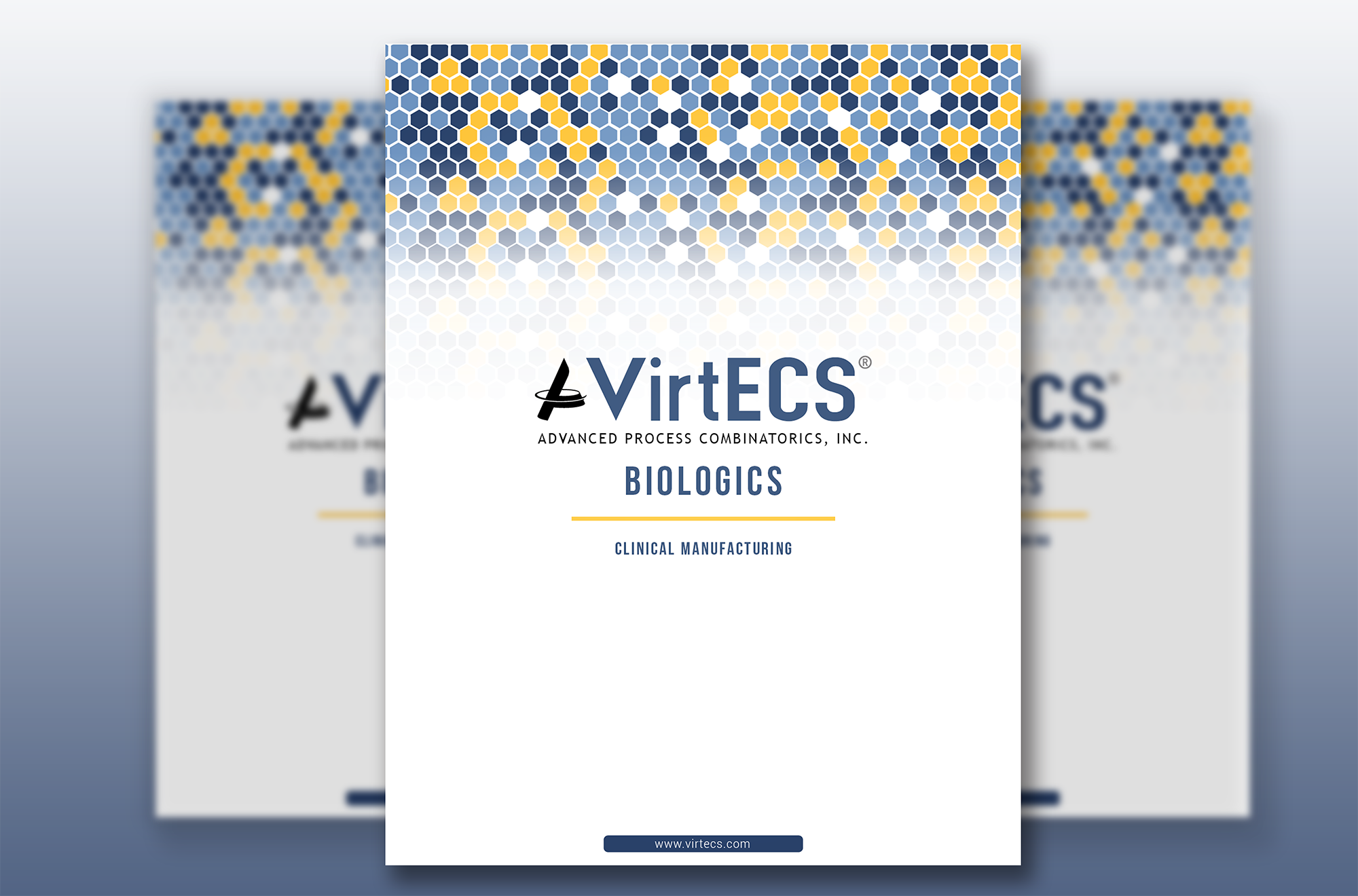For years, many of the leaders in the biopharmaceutical industry focused on vertical integration in their supply chain. These industry giants built an internal network of manufacturing plants to keep the production of drug substance and drug product under their control. However, those internal networks have become difficult to sustain given the increasing rate of development of pharmaceutical products. According to the Congressional Budget Office, between 2010 and 2019, an average of 38 new drugs were developed each year, representing a 60% increase over the previous ten years.
To keep up with their quick pace of development, some biologics companies have utilized CDMOs to take over production on new products when their internal capacity is limited. According to Grand View Research, the global market for large molecule drug substance CDMOs is expected to achieve a compound annual growth rate of 9.3% between 2023 and 2030. At the same time, other companies have chosen to keep production in-house by expanding and optimizing their internal manufacturing sites.
There are advantages for both strategies of biopharma production. Internal manufacturing sites retain more long-term profit and control, while CDMOs help create a more dynamic and adaptable supply chain. For either production route, the benefits are most pronounced when the site can maximize capacity and resource utilization by deploying digital twin technology. Follow along with us as we explore the pros and cons of relying on in-house and contract manufacturing to produce new biologics products.
The Case for In-House Manufacturing Plants
Pros
For biopharma organizations that already have a network of internal production sites, utilizing existing facilities is often the most cost-effective way to accomplish commercial manufacturing when they develop new products. CDMOs work on a contract basis, charging their clients per batch or weight of product produced, in addition to raw material and other consumable costs. Those costs can add up quickly, and if demand for the new product increases, production costs will increase concurrently. Alternatively, if the biopharma developer can utilize an internal site, additional costs beyond materials can be minimized, resulting in more retained profit from the sales of the new product.
Keeping production in-house also gives biopharma companies more control over the manufacturing process. Working with an external partner introduces risk of mistakes or decisions the developer may not agree with, even if the CDMO has experience in the industry. Utilizing internal facilities ensures that production meets company standards for product quality, working conditions, and regulatory compliance.
To continue manufacturing new products at internal manufacturing sites, biologics companies will need to optimize their schedule to accommodate the production of both new and existing drugs. For organizations with a robust product lineup, finding available capacity for new projects is often difficult and time-consuming, eventually forcing them to work with a contract partner. However, digital twin software like VirtECS is designed to help plants optimize their processes and reorganize their schedule to maximize production capacity. A digital twin also allows in-house sites to refine their processes over time, adding worthwhile investments and layout changes to create competitive advantages your organization can benefit from long-term.
Cons
Pharmaceutical companies that don’t utilize digital twin technology may find it challenging and costly to fit their growing portfolio of products into their internal plants. It requires extensive time and resources to retrofit an old plant with new product lines. Then, when circumstances change and production needs to be scaled up or down in response to fluctuations in demand, sites with inflexible schedules and processes struggle to keep up. In these situations, utilizing a CDMO may be ideal – unless the company invests in digital twin technology. A digital twin can help manufacturing sites overcome many of these production challenges, analyzing data to recommend the most ideal schedule that will fit new projects into the plant schedule without disrupting current demands. Digital twins can also test future scenarios, such as scaling output for one product up or down, to analyze the trade-offs and find the production plan that maximizes revenue for the company.
In some cases, even a digital twin can’t overcome the reality that a company’s internal manufacturing plants are maxed out of capacity. Keeping production of a new product in-house will then require constructing a new facility, which costs millions or even billions of dollars and can take five to ten to complete. For some companies, this cost and time will still be worthwhile, if they have enough projects in the pipeline to fill the new plant’s capacity. A digital twin will be helpful in these future planning scenarios, ensuring the new site is designed to optimize production by maximizing potential output and creating flexible processes that can adjust around future product changes.
The Case for CDMOs
Pros
Unlike pharmaceutical giants, which are not only involved in manufacturing, but also discovery, development, research, and market approval, CDMOs are specifically focused on key areas of commercial production. This narrow focus means that contract facilities can often dedicate more significant investments into perfecting its production processes. These sites are more likely to be kept up to date with leading technology and use leading tactics to optimize output, helping their clients produce more batches in less time. CDMOs can also offer biopharma companies examples of success from past product batches, providing much-needed assurance during high-stakes projects, as well as their proven knowledge of key industry regulations.
Additionally, CDMOs have the advantage of speed. Because CDMOs are project-based, their schedules tend to be more flexible, and most biopharma companies can quickly find and reserve space at a CDMO for new production needs. Companies that don’t utilize a digital twin at existing sites may find themselves short on capacity and spend years waiting to start production at a new internal site. If they instead partner with a CDMO, they could begin production within weeks and bring the product to market on an efficient timeline. CDMOs also offer the flexibility to scale production up or down as needed, without the internal scramble to reset the production schedule, which is complicated and time-consuming for plants operating without a digital twin.
The benefits of working with a CDMO can be enhanced if the site uses a digital twin for analysis, planning and scheduling. Using the digital twin’s virtual model of their facility, the CDMO can test scenarios incorporating new products into their schedule to find the optimal sequence of events that will satisfy all their deadlines. This technology can help CDMOs be even more accommodating for biopharma developers and take on their projects more quickly, further improving the product’s time to market. Biopharma companies looking for a CDMO partner should prioritize facilities utilizing a digital twin to gain the greatest advantage from their fast, reliable production.
Cons
Any time a company engages with a third-party partner, they run the risk of being responsible for their contractor’s mistakes. In a complicated manufacturing process, there will inevitably be errors made. If the CDMO is not well-prepared to produce a new product, they may face delays securing raw materials or mistakes that waste products, resulting in higher costs and slower run rates. Even if the biopharma company didn’t make the mistakes themselves, they will still have to deal with the fallout. To avoid these scenarios, it’s important for biologics developers to thoroughly vet their chosen CDMO to ensure they have experience in their industry and comply with Good Manufacturing Practices. Some companies also choose to create a quality agreement, which thoroughly outline expectations for production.
Coordinating the tech transfer for drugs between the drug developer and CDMO can be a particularly complicated process – especially if the CDMO or biopharma company does not use a digital twin. Without a tool that can analyze and incorporate the data for the product’s specifications early in the transfer process, CDMOs may have to spend time once the product arrives to prepare their equipment to run the batch. If there are misunderstandings or details lost in translation, it can lead to costly mistakes or wasted product that could have been avoided. To create an easier tech transfer process, biologics companies can utilize a digital twin to deliver specific production data to their CDMO partner. You can learn more about the unique advantages of VirtECS digital twin technology for biologics processes in our short guide.












